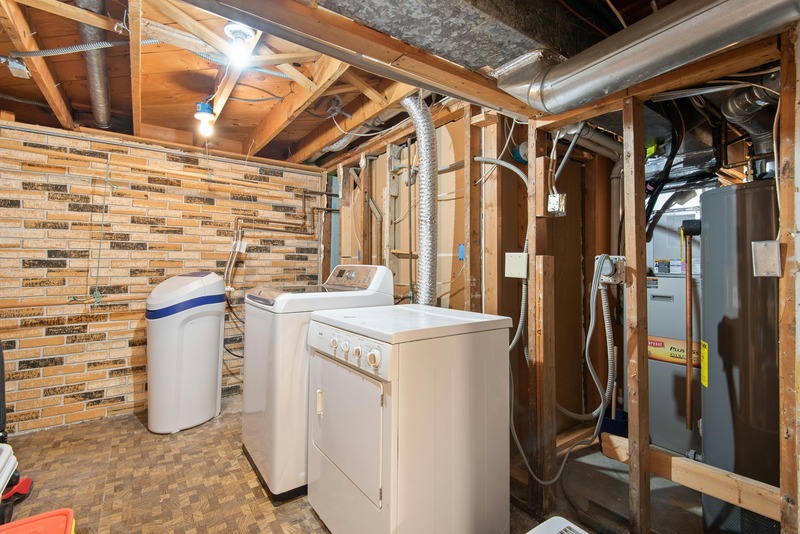
How to Create a Small Business Budget (A Practical Guide)
Whether you’re just starting out or looking to fine-tune your finances, a solid budget can mean the difference between thriving and barely surviving.
Why Every Small Business Needs a Budget
Running a business without a budget is like driving with your eyes closed—you might get lucky, but the odds aren’t in your favor.
Creating a business budget is more than just numbers on a spreadsheet; it’s a financial roadmap that helps you control expenses, plan for growth, and avoid cash flow disasters. Whether you’re just starting out or looking to fine-tune your finances, a solid budget can mean the difference between thriving and barely surviving.
This guide will walk you through the essential parts of a small business budget, giving you a starting point. Every business is unique, and your budget should be, too.
Key Points:
- Budgeting for your business is incredibly important and should be part of your weekly or monthly routine.
- Your budget will have at least 5 key components: Revenue, Variable Costs, Fixed Costs, One-time/Unexpected Expenses, Profit
- Building a business budget can be daunting, but breaking it down into small chunks and keeping things simple will help you get started
- The budget for your business is the road map that will help you grow and plan your business.
The Basics of a Business Budget
What is a Business Budget?
A business budget is a financial plan that estimates income and expenses over a set period—typically monthly, quarterly, or annually.
In short, it tracks the money going in and out of your business. Effective business budgeting involves using practical resources and templates to create a structured method for tracking income and expenses while managing finances proactively to avoid cash flow issues.
Why is Budgeting Important?
Budgeting gives you control over your business finances, helps you stay profitable, and prepares you for the unexpected. Let’s examine why budgeting is essential, using real-life examples and insights from successful business leaders.
1. Keeps Your Finances Organized and Predictable
When you have a clear budget that lists all your expenses, you know exactly where your money is going and can make informed decisions. Without one, you’re operating on guesswork, which can lead to financial chaos.
Howard Schultz, former CEO of Starbucks, once said: “Risk more than others think is safe. Dream more than others think is practical.”
While taking risks is necessary in business, Schultz always emphasized financial discipline in scaling Starbucks. The company’s success wasn’t just about great coffee—it was about carefully planned growth, backed by a strict budgeting process to open thousands of locations worldwide.
Example: Imagine you own a bakery. You bring in $10,000 a month but don’t track where it’s going. Without realizing it, you’re overspending on premium ingredients and unnecessary marketing. Suddenly, you can’t cover your rent. A simple budget that lists all your expenses would have flagged the overspending before it became a crisis.
2. Helps You Track Profitability and Avoid Overspending
A business can have high revenue but still struggle financially due to poor budgeting and ineffective business budgets. Tracking profitability ensures you’re not just making money but actually keeping some of it.
Warren Buffett, one of the world’s most successful investors, said: “Do not save what is left after spending, but spend what is left after saving.” Buffett’s philosophy applies to business owners too. If you don’t prioritize profitability in your budget, you’ll always be playing financial catch-up.
Example: A digital marketing agency earns $50,000 a month, but after payroll, rent, and software subscriptions, there’s barely anything left. By reviewing their budget, they find $5,000 in unnecessary tools and office expenses they can cut, turning their business from break-even to profitable.
3. Ensures You Have Cash Reserves for Unexpected Expenses
Unexpected costs can sink a business if you're not prepared. Whether it’s a slow sales month, equipment failure, or an emergency expense, having cash reserves is crucial.
Sara Blakely, founder of Spanx, built a billion-dollar brand with just $5,000 in savings. She said:
"I’d rather have security and a rainy-day fund than a flat-screen TV." Blakely understood that financial cushioning is the key to surviving tough times and taking opportunities when they arise.
Example: A restaurant owner unexpectedly has to replace a broken refrigerator—a $3,000 expense. Without savings, they’d have to take out a high-interest loan. But because they budgeted an emergency fund, they pay for it upfront and avoid debt.
4. Makes It Easier to Plan for Future Growth
A good budget isn’t just about surviving today—it’s about growing tomorrow. If you plan your finances well, you’ll have money to invest in new opportunities, hiring, and expansion.
Jeff Bezos, founder of Amazon, once said: "If you only do things where you know the answer in advance, your company goes away."
Bezos scaled Amazon by strategically reinvesting profits into growth. But this only worked because he had a budget that balanced reinvestment with financial stability.
Example: A gym owner wants to open a second location. Instead of taking a risky loan, they allocate 10% of monthly profits into a growth fund for a year. By budgeting ahead, they expand debt-free and build their business safely.
Budgeting isn’t about restricting spending—it’s about being intentional with your money.
Key Components of a Small Business Budget
Your budget will have at least 5 key components. Depending on your business, it may have more or even subsections within these core areas:
Revenue (Income) Estimation
Your revenue is the money coming into your business, primarily from:
- Product or service sales
- Subscription or membership fees
- Partnership revenue or commissions
Pro Tip: Be realistic when estimating revenue. Look at past trends and consider seasonal fluctuations when forecasting your predicted revenue. A budget can help you estimate money inflow and outflow, enabling proactive resource management and strategic growth planning.
Fixed Costs (Essential Expenses)
These are the fixed costs you must pay every month, regardless of revenue:
- Rent or mortgage
- Salaries and wages
- Business insurance (health, liability, property, etc.)
- Loan payments
- Utilities (electricity, water, internet, phone)
Your electricity bill can be a big overhead cost, especially if you have a storefront, office, or warehouse. If you’re in a deregulated energy market like Texas or Pennsylvania, you can shop for better rates and cut costs with EnergyBot.
Variable Costs (Fluctuating Expenses)
Variable costs are expenses that change based on sales or production. For example, if you are a lawn care company, gas is a variable cost because the more yards you mow, the more gas you will use.
Some common variable expenses include:
- Inventory or raw materials
- Marketing and advertising
- Commission-based salaries
- Packaging and shipping
- Office supplies
- Maintenance and repairs
Tip: If business slows down, these are the expenses you can adjust first.
Tracking your monthly expenses is crucial for managing cash flow and identifying potential cost-saving opportunities.
One-Time or Unexpected Expenses
Keep a small amount of cash on hand for a rainy day. You never know when a piece of equipment might break or an unexpected tax bill may land on your desk.
For example, if you own a restaurant and your oven or stove breaks down, you could be responsible for thousands of dollars in repairs. Not to mention the cost of electricity if faulty heating has driven up your bill. These expenses are steep, but they’re not ones your business can live without.
You can’t predict everything, but you can prepare for one-time costs like:
- Equipment purchases
- Emergency repairs
- Legal fees
- Taxes
- Expansion costs
Set aside an emergency fund with at least 3-6 months of expenses.
Profit - Planning for Growth, Not Just Survival
A successful business budget doesn’t just aim to cover expenses—it should be designed to ensure profitability and growth. Setting clear profit goals helps you determine how much revenue your business needs to generate and where to allocate earnings.
1. Define Your Target Profit
Start by asking yourself: How much profit do I want to make?
Profit is what remains after subtracting all expenses from revenue. However, not all profits are created equal. A business generating $500,000 in revenue with $480,000 in expenses is technically profitable, but with only a 4% profit margin, it may not be sustainable long-term.
A healthy profit margin varies by industry, but here are general benchmarks:
- Retail: 3-10%
- Service-based businesses: 15-30%
- Manufacturing: 10-20%
- Software/tech: 20-40%
Pro Tip: If you’re unsure what your profit margin should be, research industry standards or aim for at least 10-15% as a starting point.
2. Set Revenue Targets to Achieve Your Profit Goals
Once you define your desired profit, work backward to determine how much revenue you need to generate.
Example Calculation:
- Target annual profit: $100,000
- Projected annual expenses: $250,000
- Required revenue = expenses + profit goal
- $250,000 + $100,000 = $350,000 in revenue needed
This calculation gives you a baseline revenue goal, but there are additional factors to consider:
- Seasonality: Will some months generate more revenue than others?
- Pricing strategy: Are your prices high enough to sustain your profit goals?
- Sales volume: Do you need more customers, or should you focus on selling higher-value products/services?
If your projected revenue doesn’t meet your profit goals, you may need to:
- Increase prices or offer premium services
- Reduce unnecessary expenses, like energy inefficiencies
- Optimize sales and marketing efforts
3. Decide How to Allocate Your Profits
Once your business is profitable, the next decision is how to use those profits. Some key areas to consider:
Reinvesting in Business Growth
- Hiring additional staff
- Upgrading equipment or technology
- Expanding product lines or services
- Increasing marketing and advertising efforts
Building a Financial Safety Net
- Growing an emergency fund
- Reducing business debt
- Setting aside funds for tax obligations
Paying Yourself as the Business Owner
- Determine a fair salary based on industry benchmarks
- Consider taking dividends or profit-sharing distributions
Saving for Long-Term Stability
- Planning for future expansions
- Investing in business-related assets
- Setting up retirement plans (SEP IRA, 401(k), etc.)
4. Track and Adjust Profitability Goals Regularly
Setting profit goals is not a one-time task. Review your financials at least quarterly to track progress and make adjustments. If profits are lower than expected, analyze whether expenses are too high, pricing is too low, or revenue is falling short.
Key Metrics to Monitor:
- Net Profit Margin = (Net Profit / Revenue) x 100
- Gross Profit Margin = (Revenue - Cost of Goods Sold) / Revenue x 100
- Operating Profit = Revenue - (Cost of Goods Sold + Operating Expenses)
If your profit margins aren’t where they need to be, it’s time to optimize—either by increasing revenue, reducing expenses, or both.
Profit is not just a number—it’s what fuels your business’s sustainability and success. Setting clear, realistic profit goals ensures that you’re building a business that not only survives but thrives.
Steps to Build Your Small Business Budget
1. Review Past Financial Data
Analyze historical financial data to identify trends and anticipate future cash flow.
- Review past income and expenses to understand seasonal fluctuations and patterns.
- Identify months of high and low revenue to plan for potential shortfalls.
- Examine unexpected expenses and adjust your budget to account for similar situations.
- List all your expenses and calculate them against anticipated income to create a comprehensive budget.
- If you’re a new business, research industry benchmarks to estimate expected costs and revenues.
2. Estimate Your Income
Project your revenue based on realistic sales expectations rather than assumptions.
- Use past sales data as a guide for forecasting revenue.
- Factor in seasonal variations, economic conditions, and potential business growth.
- Consider multiple revenue streams, such as product sales, services, or partnerships.
- If your business is new, base estimates on market research, competitor analysis, and customer demand.
3. List All Fixed and Variable Expenses
Identify and categorize your costs to control spending and improve financial planning.
- Fixed expenses (do not change month to month): rent, salaries, insurance, loan payments, and utilities.
- Variable expenses (which fluctuate based on business activity) include inventory, utilities, marketing, shipping, travel, and maintenance.
- Review expense categories to identify areas for cost-cutting or optimization.
- Compare suppliers and negotiate better rates for services and materials.
Using a business budget template can simplify this process by providing structure and helping you avoid mistakes while tracking financial forecasts and expenses.
4. Account for Emergency Funds & Unexpected Costs
Set aside cash reserves to cover unforeseen business expenses.
- Allocate funds for equipment repairs, legal fees, tax adjustments, and other emergencies.
- Aim to maintain at least three to six months’ worth of operating expenses in savings.
- If funds are limited, start by setting aside a small percentage of revenue each month.
- Consider business insurance or contingency plans to mitigate financial risks.
5. Track and Adjust Monthly
Regularly review and update your budget to stay on top of changing financial conditions.
- Compare actual revenue and expenses against projections to identify discrepancies.
- Adjust your budget as needed based on sales trends and cost changes.
- Schedule monthly and quarterly reviews to ensure financial goals remain on track.
- Use accounting software or spreadsheets to monitor cash flow and profitability.
A well-structured budget isn’t just a financial document—it’s a strategic tool that helps you make informed decisions, maintain financial stability, and drive business growth. By following these steps and consistently tracking your progress, you can create a budget that adapts to your business’s evolving needs. Additionally, utilizing a budget template tailored to your specific business needs can further enhance your ability to track income, forecast expenses, and make informed decisions.
Common Budgeting Mistakes to Avoid
Underestimating Expenses
Being optimistic is usually a good thing, but when it comes to small business budgets, you need to consider all scenarios.
A good practice to ensure that you have considered all scenarios is to create three versions of your expenses: best case, likely case, and worst case. This will help you consider the range of possibilities.
Always round up expenses and leave room for surprises.
Not Reviewing Your Budget Regularly
You didn't start your business to create and monitor budgets—that's just an unpleasant part of the job.
But it is incredibly important. You should review, update, and track your budget weekly or at least monthly.
The best thing you can do is block your calendar and set a time each week to review your budget. If you stay on top of it, 15-30 min a week will save you hours and heartbreak in the future.
Your business changes and your budget should too.
Ignoring Cash Flow
Cash is king. Your business may constantly record sales, but are you actually receiving the funds for the products or services sold?
Here is a real-life scenario: A construction company's invoicing software lists a dozen kitchen remodels. On paper, this looks like they were making money hand over fist, but each project only required a down payment to get started.
The construction company then had to buy the materials for the remodel. After purchasing the materials, they were already in the hole. Not to mention, each project takes weeks or even months. So, despite showing nice revenue in their accounting software, they struggled to have cash on hand because they hadn't finished the jobs and been paid in full.
Even if you're profitable, you can run out of cash if revenue is delayed.
Optimize and Lower Expenses
- Whether it’s suppliers, insurance, or electricity, always look for better deals.
- Energy costs are a big factor for businesses—see if you’re overpaying by comparing rates at EnergyBot.
A Budget is Your Business’s Financial Roadmap
A small business budget isn’t just about cutting costs—it’s about making smart financial decisions so you can grow and thrive. Start with a simple budget, adjust it as you go, and stay proactive about your expenses.
Ready to reduce overhead costs? Start by comparing electricity rates with EnergyBot. Our customers save an average of 20% on their electric bills.
Written by Thad Warren
Thad is a native Texan who has worked in the energy industry for just over 5 years.
Connect
Recent Posts
What is considered a utility bill? Your Guide to Essential Services
Utilities help to keep your daily life comfortable and your home operable. So, what is considered a utility bill? And, what is the average cost of your monthly utility bill? In this guide we’ll break down what types of essential services make up your utility bills, how to read your bill, and strategies for reducing different utility bills.
March 2025

4 minutes

Creating Your Home Buying Budget: How much house can you afford?
Before you begin the home buying process, it’s important to take the time to understand how to budget to buy a home. In the time leading up to closing you’ll need to make smart financial decisions and save strategically for your home buying budget.
March 2025

6 minutes

Why You Need to Create a Budget: Everything You Need To Establish a Home Budget
Struggling to manage your finances? Learn how creating a household budget can help you take control of your money, reduce stress, pay off debt, and save for the future.
March 2025

6 min




